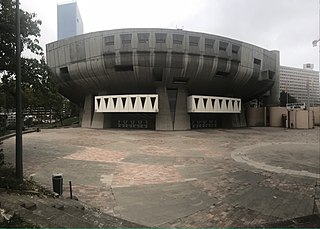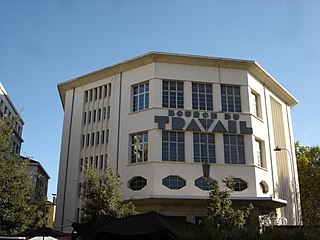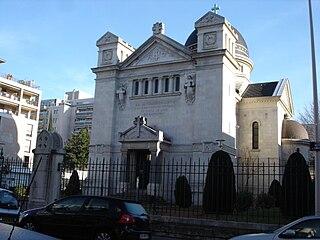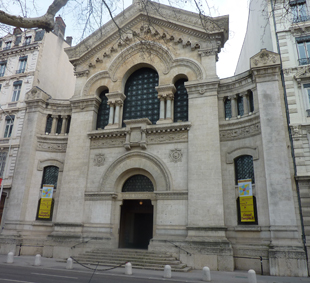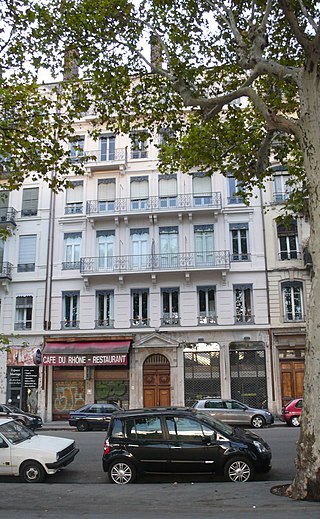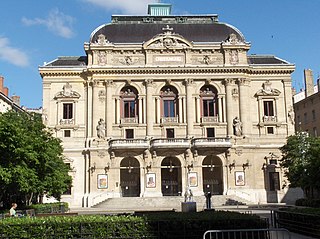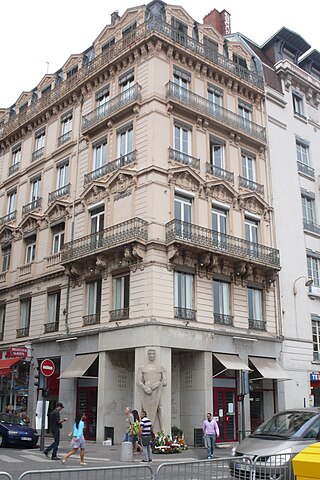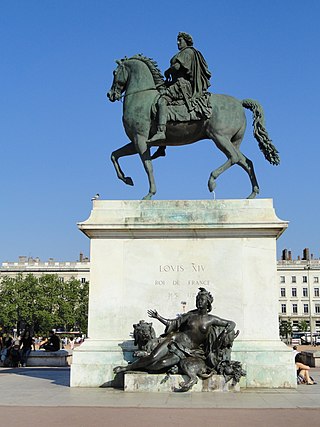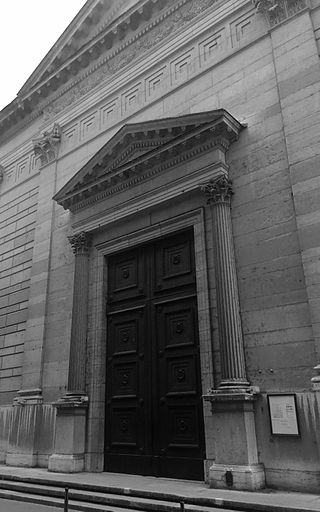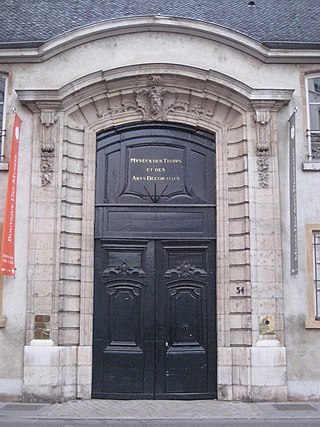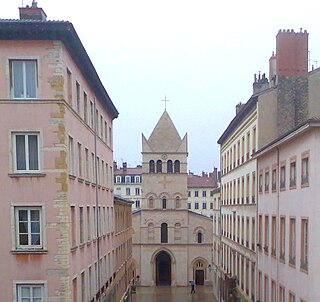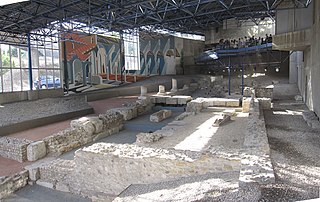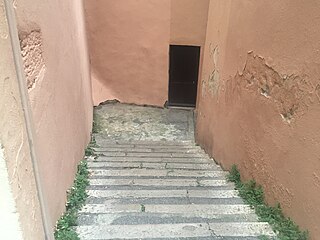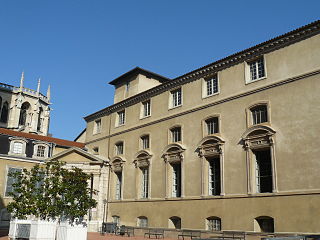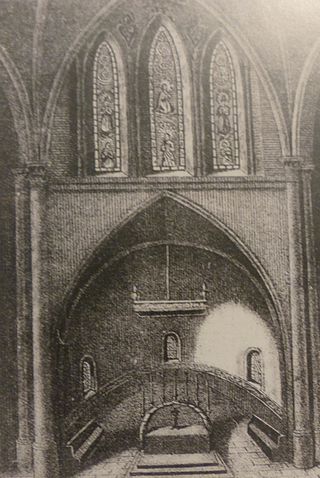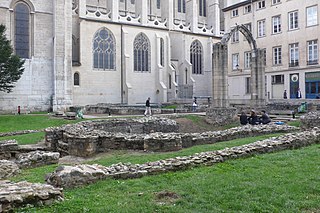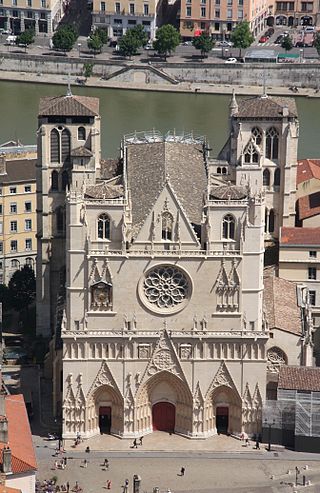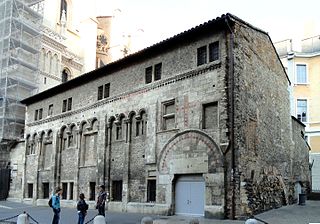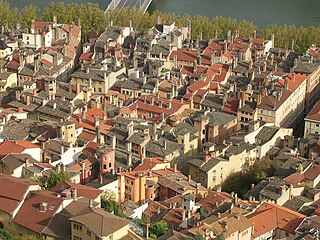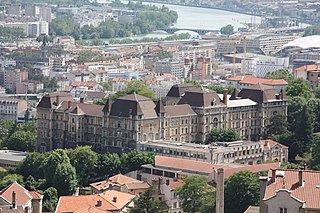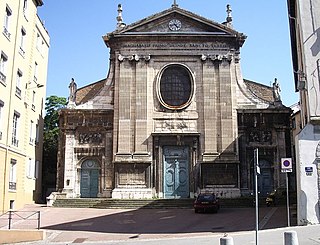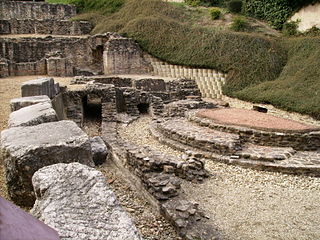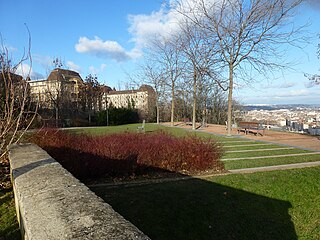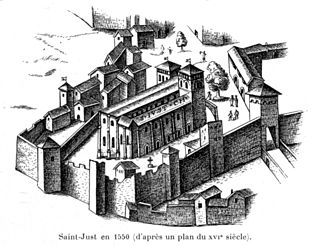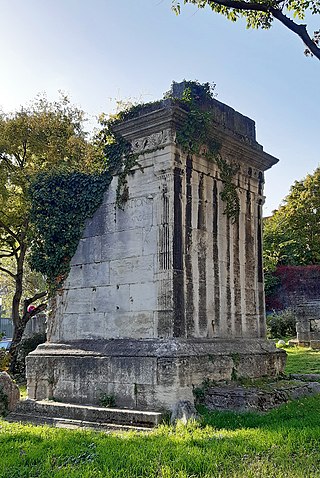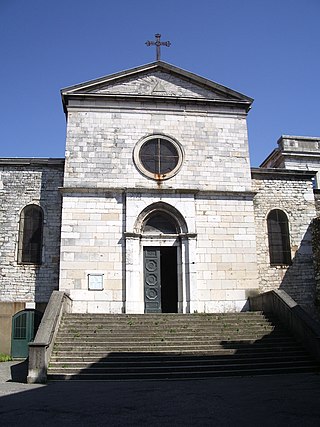Self-guided Sightseeing Tour #5 in Lyon, France
Legend
Guided Free Walking Tours
Book free guided walking tours in Lyon.
Guided Sightseeing Tours
Book guided sightseeing tours and activities in Lyon.
Tour Facts
10.8 km
345 m
Experience Lyon in France in a whole new way with our free self-guided sightseeing tour. This site not only offers you practical information and insider tips, but also a rich variety of activities and sights you shouldn't miss. Whether you love art and culture, want to explore historical sites or simply want to experience the vibrant atmosphere of a lively city - you'll find everything you need for your personal adventure here.
Activities in LyonIndividual Sights in LyonSight 1: Auditorium Maurice-Ravel
The Maurice Ravel Auditorium is a concert hall located in Part-Dieu, the 3rd district of Lyon. It was originally built for the National Orchestra of Lyon and is their residence hall. It is also one of the first buildings in France to be built with Prestressed concrete.
Sight 2: Le Buisson Ardent
The Burning Bush is a fountain designed by Geneviève Böhmer located in the 3rd arrondissement of Lyon, France.
Sight 3: Bourse du Travail
The Bourse du Travail is a 1,950-capacity theatre located in Lyon, France.
Sight 4: Chapelle Sainte-Croix de Lyon
The Chapel of the Holy Cross or Chapel of the Missionaries of Notre-Dame is a Byzantine-style building located in the 6th arrondissement of Lyon. Raised in memory of the victims of the siege of Lyon in 1793, it belongs to the Commission of the Religious Monument of Brotteaux, an association under the law of 1901.
Sight 5: Grand Temple
The Grand Temple de Lyon, also known as the Temple des Brotteaux, is a Protestant place of worship located on the left bank of the Rhône, 3 quai Victor-Augagneur, in the 3rd arrondissement of Lyon. The parish is a member of the United Protestant Church of France.
Sight 6: Le Café du Rhône
The Café du Rhône is a café-restaurant located at 23 quai Victor-Augagneur in Lyon, France.
Sight 7: Chapelle de l'Hôtel-Dieu
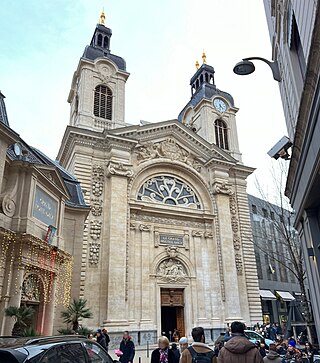
The Notre-Dame-de-Pitié Chapel, more commonly known as the Hôtel-Dieu Chapel, is a religious building located in the Bellecour district, in the 2nd arrondissement of Lyon, which belongs to the Hospices civils de Lyon. It is sometimes called the church of the Hôtel-Dieu because it is attached to the Basilica of Saint Bonaventure and previously to the parish of Saint-Nizier.
Sight 8: Fontaine des Jacobins
The Place des Jacobins is a square located in the 2nd arrondissement of Lyon. It was created in 1556 and a fountain was added in 1856. The square belongs to the zone classified as World Heritage Site by UNESCO. According to Jean Pelletier, this square is one of the most famous in Lyon, because of its location in the center of the 2nd arrondissement and its heavy traffic, as 12 streets lead here. The square, particularly its architecture and its features, has changed its appearance many times throughout years.
Sight 9: Théâtre des Célestins
Get Ticket*The Théâtre des Célestins is a theatre building on Place des Célestins in Lyon, France. It was designed by Gaspard André, and inaugurated in 1877, then in 2005. Alongside the Comédie-Française and the théâtre de l'Odéon, it is one of few theatres with over 200 years' continual usage in France. It is now a municipal theatre directly run by the City of Lyon. It has a contemporary and classical repertoire as well as producing new work.
Sight 10: Veilleur de pierre
Get Ticket*Stone Watcher is a sculpture by the sculptor Georges Salendre and the architect Louis Thomas, installed in 1948 at the intersection of rue Gasparin and place Bellecour in Lyon. It is a memorial to the French internal resistance recalling the assassination by the Germans of resistance fighters Albert Chambonnet, Gilbert Dru, Léon Pfeffer, René Bernard and Francis Chirat precisely at the location of the sculpture, on July 27, 1944.
Sight 11: Statue équestre de Louis XIV
The Monument to Louis XIV is a bronze equestrian statue of Louis XIV made by the sculptor François-Frédéric Lemot located on the Place Bellecour in Lyon, dating from 1825. It has been listed as a historical monument since 25 March 2016.
Sight 12: Église Saint-François-de-Sales
The Church of Saint-François de Sales is a Catholic church dedicated to Saint Francis de Sales, located at 11 rue Auguste-Comte in the Ainay district, in the 2nd arrondissement of Lyon.
Sight 13: Musée des Tissus et des Arts décoratifs
The Musée des Tissus is located in the 2nd arrondissement of Lyon, at 34 rue de la Charité, along with the Musée des Arts Décoratifs.
Wikipedia: Musée des Tissus et des Arts décoratifs (FR), Website
Sight 14: Basilique Saint-Martin d'Ainay
The Basilica of Saint-Martin d'Ainay is a Romanesque church in Ainay in the Presqu'île district in the historic centre of Lyon, France. A quintessential example of Romanesque architecture, it was inscribed on the UNESCO World Heritage List along with other notable buildings in the centre of Lyon as a testimony to Lyon's long history as an important European town and unique blend of architectural styles.
Sight 15: Basilique funéraire Saint-Laurent de Choulans
Saint-Laurent-de-Choulans is an archaeological site located in Lyon at the foot of the entrance to the Fourvière tunnel, and dates from the Merovingian period. This site includes the remains of a church surrounded by a fenced Christian necropolis, with an area of 0.5 to 1 ha.
Wikipedia: Basilique funéraire Saint-Laurent de Choulans (FR)
Sight 16: Église Saint-Georges
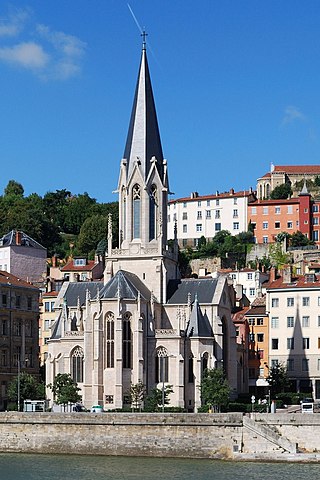
The Église Saint-Georges is a Roman Catholic church located on the Place François-Bertras, in the Vieux Lyon quarter, in the 5th arrondissement of Lyon. It is under the direction of the Primatiale parish and was named in honor of Saint George. The cathedral is near the Place Benoît-Crépu, between the quarter of the Quarantaine and Saint-Jean quarters.
Sight 17: Impasse Turquet
Impasse Turquet is a small cul-de-sac in Lyon. It contains the oldest houses in the city with the oldest wooden balconies dating from between the fourteenth and fifteenth centuries.
Sight 18: Palais archiépiscopal
The Archiepiscopal Palace of Lyon, or Palais Saint-Jean, is a building of medieval origin located in the 5th arrondissement of Lyon. Home of the bishops and archbishops of Lyon for many centuries, it has undergone many developments. Confiscated during the Revolution, it was used from 1974 to store the municipal archives of Lyon.
Sight 19: Église Saint-Étienne
The church of Saint-Étienne de Lyon, destroyed after the French Revolution, is probably the oldest church in Lyon. It belongs to the cathedral group of Lyon and is located north of the primatial church of Saint-Jean and south of the church of Sainte-Croix. It includes the ancient baptistery that adjoined the cathedral.
Sight 20: Église Sainte-Croix de Lyon
The Church of Sainte-Croix in Lyon is a Catholic religious building destroyed in the nineteenth century. It is the northernmost church of the Lyon episcopal group, including the Saint-Jean cathedral and the former Saint-Étienne church, and the remains of its foundations can be seen in the adjoining archaeological park.
Sight 21: Cathédrale Saint-Jean
Get Ticket*Lyon Cathedral is a Roman Catholic church located on Place Saint-Jean in central Lyon, France. The cathedral is dedicated to Saint John the Baptist, and is the seat of the Archbishop of Lyon. Begun in 1180 on the ruins of a 6th-century church, it was completed in 1476. Despite its long construction time, it has a relatively consistent architectural style. In 1998, the building, along with other historic sites in the center of Lyon, was inscribed on the UNESCO World Heritage List.
Sight 22: Manécanterie
The Manécanterie is an ancient monument situated in Lyon in Saint Jean district, in the 5th arrondissement of Lyon. It is placed side by side to the south southwest of the cathedral Saint Jean and is a part of the former convent of the cathedral. This small Romanesque building served first as dining hall to the canons of Saint Jean, before becoming a parish choir school, namely a school for the singing of the clergy. In 1998, it was inscribed on the UNESCO World Heritage List along with other notable buildings in historic Lyon as a testimony to Lyon's long history and unique architecture.
Sight 23: Historic Site of Lyon
Vieux Lyon is the largest Renaissance district of Lyon. In 1964, Vieux-Lyon, the city's oldest district, became the first site in France to be protected under the Malraux law to protect France's cultural sites. Covering an area of 424 hectares between the Fourvière hill and the river Saône, it is one of Europe's most extensive Renaissance neighborhoods. There are three distinct sections: Saint Jean, Saint Paul and Saint Georges. In 1998, Vieux Lyon was inscribed on the UNESCO World Heritage List along with other districts in Lyon because of its historical importance and architecture.
Sight 24: Place des Minimes
The Place des Minimes is a square located in the 5th arrondissement of Lyon, France
Sight 25: Église Saint-Just
The church of Saint-Just or Saint-Just of the Maccabees church, is a church in Lyon, France. It is located at 41 rue des Farges, in Lyon and until 2014, the church hosted the "French-speaking Orthodox parish of the Holy Encounter", a parish of the Orthodox Byzantine rite dependent on the patriarchate of Constantinople.
Sight 26: Thermes Gallo-romains
The Ancient Baths of Lyon refer to several Roman thermal establishments located in Lyon, France. The most important of those discovered is that of the rue des Farges built on the side of the hill of Fourvière, possibly referred to as the baths of Apollo according to a tenuous set of clues.
Sight 27: Jardin des Curiosités
Jardin des Curiosités is a 6,000-square-metre (65,000 sq ft) park in Saint-Just, Lyon. It is also called Jardin de Montréal, Belvédère Abbé Larue, Jardin de proximité Montréal and Jardin du Belvédère. It is situated at an altitude of 232 metres (761 ft) at the east end of place Abbé-Larue.
Sight 28: Fresque Les basiliques de Saint-Just
The list of painted walls in Lyon is a non-exhaustive list of exterior murals in the Rhône department and the metropolis of Lyon. In everyday language, these "painted walls" are also called trompe-l'oeil or fresco.
Sight 29: Site archéologique de Saint-Just Les Minimes
The Basilica of Saint-Just also known as Saint-Just basilica or the Maccabees Basilica was one of the oldest and most powerful churches in the city of Lyon until it was destroyed during the French Wars of Religion.
Sight 30: Mausolée romain de Satrius
The tomb of Turpio is a Roman tomb that is part of a set of ten funerary monuments discovered on the outskirts of Lyon in 1885, during clearing work in the Saint-Just district. This ensemble is to be linked to the ancient necropolises of Trion.
Sight 31: Église Saint-Irénée
The Saint Irenaeus Church, Lyon, located on the heights of Lyon in the neighborhood of St. Irenaeus, is one of the oldest churches in France. It is named for Irenaeus first Bishop of Lyon and Primate of Gaul.
Share
How likely are you to recommend us?
Disclaimer Please be aware of your surroundings and do not enter private property. We are not liable for any damages that occur during the tours.
GPX-Download For navigation apps and GPS devices you can download the tour as a GPX file.
